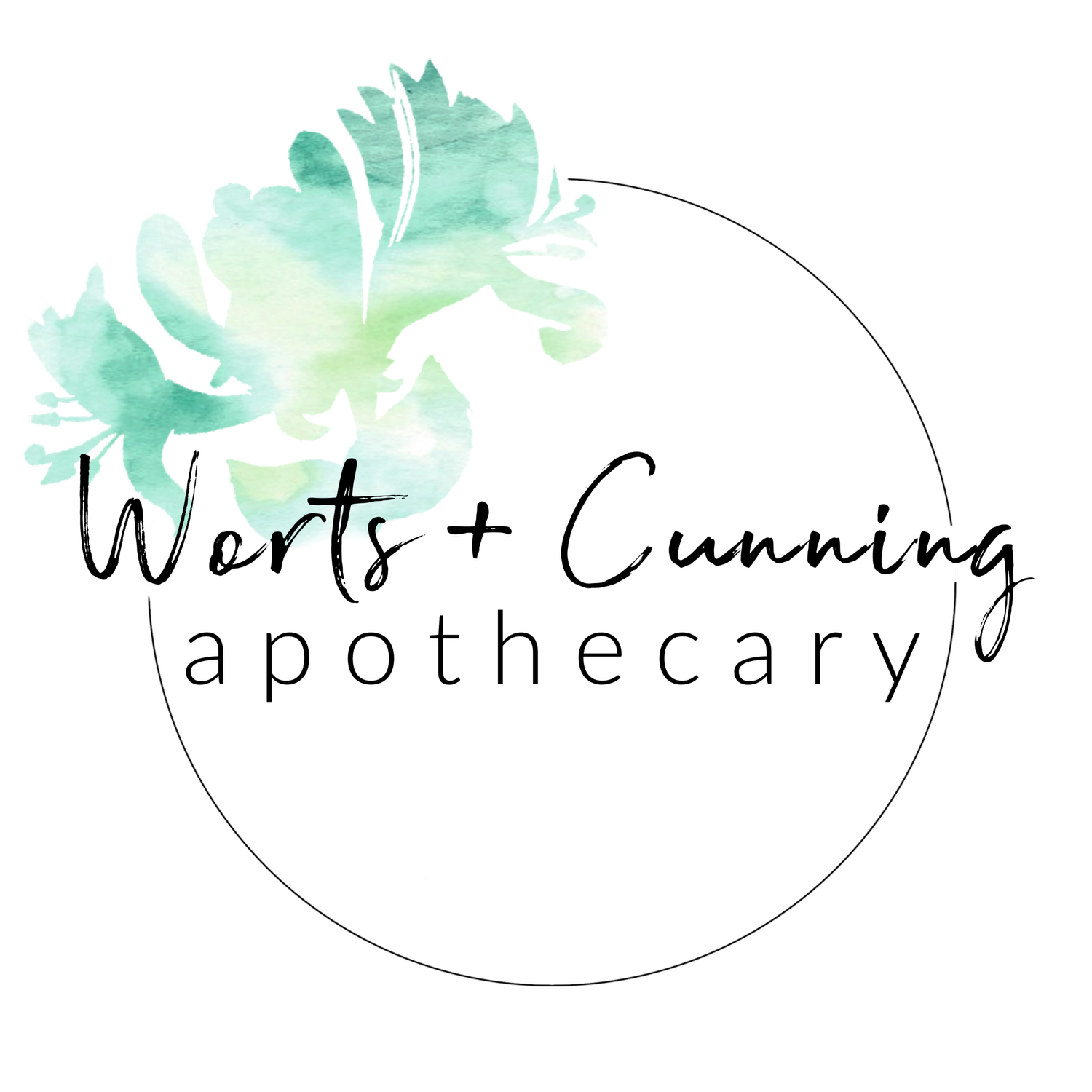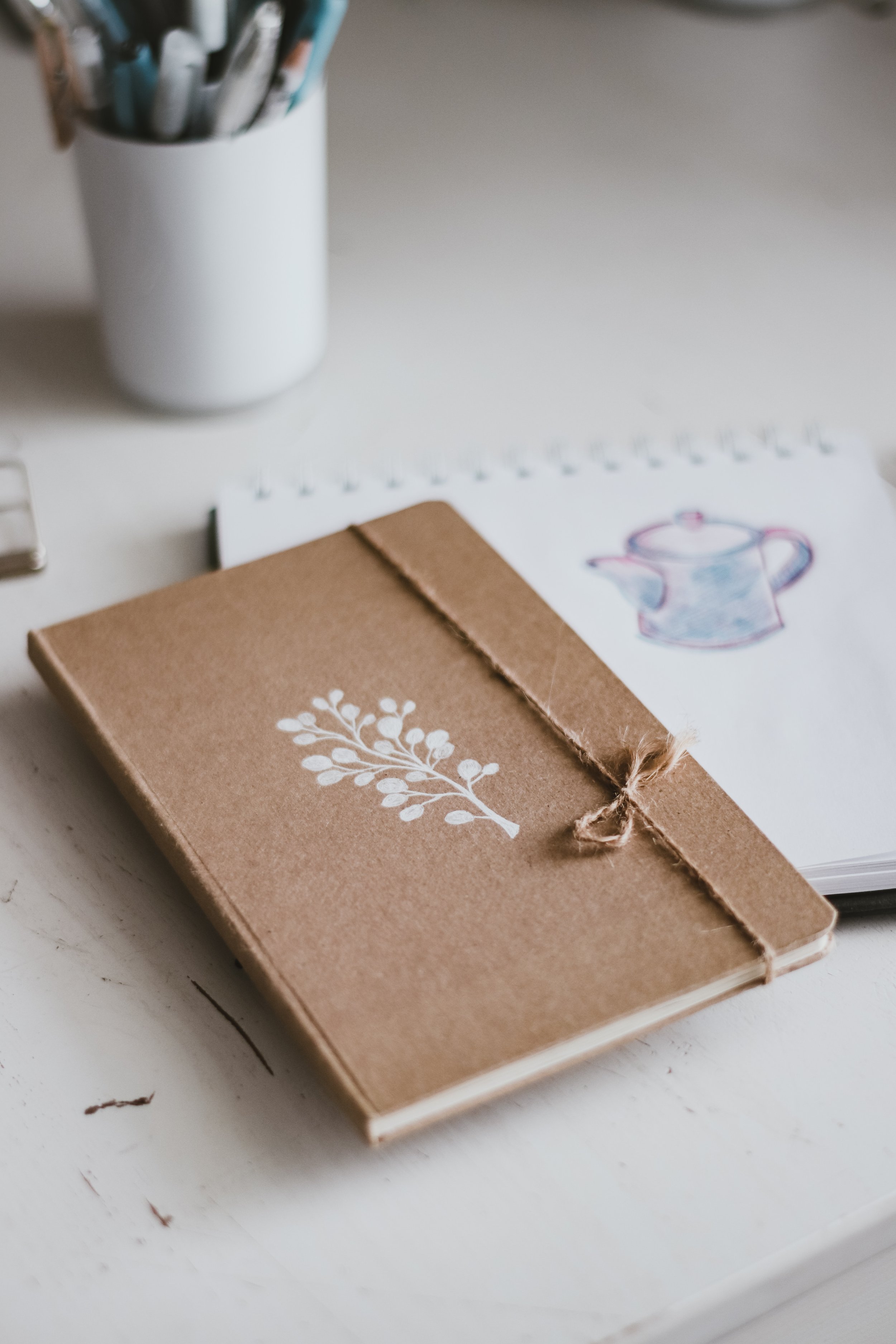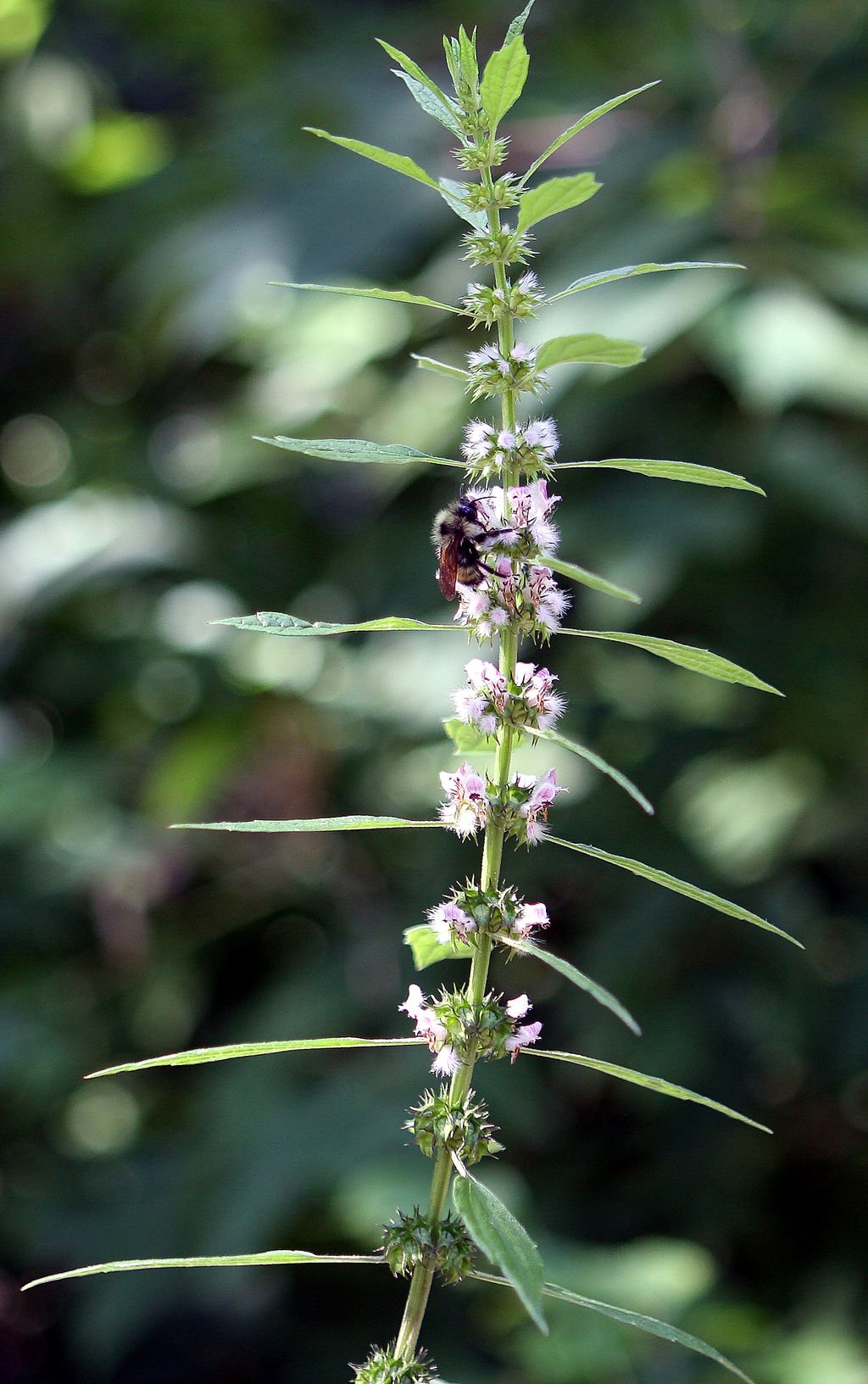Keeping Space for Healing: How To Organize Your Plant Profiles
Apparently, March has become the month that I write about plant profiles and materia medicas. So, at the risk of writing about increasingly niche topics on an already niche blog, I now want to talk about organizing your plant profiles as you start to write and/or collect them.
I know, I know what it sounds like. We're not heading into thrilling territory, but how you organize information that you need regular access to - whether that is as a community herbalist or a home herbalist - supports your ability to practice with ease as an herbalist.
When I was a student herbalist, I was simultaneously thrilled by everything there was to learn and pretty overwhelmed by all the information on plants that I was studying. As with so many paths of study out there, I came to understand that the purpose of an herbalist was not to have memorized all the uses for all the herbs (though you'll certainly know many uses for many herbs through time and practice), but to learn what it is you need to know and how to seek it out. So when I have a client show up in clinic with a condition I've never heard of before, I've not already failed as an herbalist. Instead, my training helps me to ask the questions that need to be asked and listen deeply to what needs to be heard so that I can seek out the resources that'll support my client.
One of the most important tools in my kit is my collection of plant profiles and materia medicas. I've already written about plant profiles, why they're useful, and how to create your own, but now that you've got these useful plant profiles in your collection, how do you use them in a practical manner? In addition to the plant profiles I've written, I've got handouts from classes and workshops I've attended, a collection of herbal books both modern and historical, and lots and lots of notes. It took me a while to find a system of organization that worked best for me and if I can help some of you develop your own much sooner into your practice as an herbalist than I did, then this post will be a success!
Well-organized resources helps you to find the information you need efficiently which matters whether you're working one-on-one with clients in a time-constrained environment or as a home herbalist taking care of sick family members (and half the time being sick yourself). Hopefully, one or more of the suggestions below will be of use to you in your own practice or, at minimum, inspire thoughts of how to make your herbal practice feel more easeful and nourishing to you and those you serve.
Keeping It Accessible
I do much of my work on a computer where everything is digitally stored and organized, but when I'm working on a new recipe or sitting with a client, I prefer looking at paper than a screen. I like the physicality of being able to flip through books and scribble notes on a paper, plus having a screen free space, particularly within a client consultation setting, is an important part of how I am able to be present to the energy at hand. For me it's important to have non-digital reference material available, but you might prefer to have everything digitized. Figuring out how you want to access your plant profiles and other herbal tools is part of understanding how you're able to remain present and engaged, so if you're annoyed by having to pull books off the shelf every time you want to look up information about a particular plant and would much prefer being able to pull up that same book on your tablet of choice, make the switch!
So much energy and concentration is needed to show up for others as an herbalist, whether clients or members of your family, which is why it's important to reduce any hassle or hindrance in your practice as much as possible. Make it easy for yourself, friends.
Questions to consider:
What profiles, books, and other reference material do I want physical copies of?
What profiles, books, and other reference material do I want digital copies of?
Where will I keep my physical reference material (and herbal tools) for easy access?
Keeping It Together: Modes of Storage
How you choose to store your plant profiles and other tools of your trade is going to be deeply personal and informed by the space you have and your preferences. I like using physical materia medicas over digital ones so I always have my bookshelf within reach of my writing desk, but for those of you who keep everything digitized, you might not need this arrangement. Having a tablet stand equipped with ease for charging might be your priority instead. It takes time to figure out what works for you, but it is time well spent so that when your services are needed, what you need is organized in a way that makes the most sense for you to access.
I hope the following suggestions help you to figure out how you organize your plant profiles, perhaps in a way you hadn't considered before.
Recipe Box
When I was making and selling remedies, the best way for me to store my recipes were on index cards in a wooden recipe box that I'd thrifted. They were organized alphabetically with dividing tabs because that made the most sense for me, but they could've easily been organized by body system, primary herb used, astrologically, and so on. While I also had my recipes written up and stored digitally, I didn't like having my computer around when making recipes because I did not want to risk spilling something on it and I worked in a very small space at the time and couldn't fit my laptop and remedy making supplies in the same area even if I wanted to.
You could store shorthand plant profiles in a recipe box, too (i.e. information about an herb that you use frequently such as herbal actions, energetics, indications, and contraindications). What I like about my recipe box full of recipes is that it is easy to add or subtract from, reorganize, and grab what I need (a index card or two) in a form that is not overly precious or takes up too much space. While you could organize your plant profiles alphabetically in a recipe box, there are a number of other ways that might be more useful to you and how you practice including by:
Body System
Energetics (traditional western energetics or otherwise)
Disease or Imbalance (i.e. Prunella vulgaris for indigestion)
Astrological Correspondence (i.e. the planets or by signs of the zodiac)
Magickal Use
Seasonal Herbs (i.e. what's in season in your garden and surrounding area throughout the year - check out my seasonal apothecary guides for inspiration)
Seasonal Remedies (i.e. herbs organized by common seasonal imbalances such as a section for herbs for spring allergies and another section for cold and flu herbs for autumn and winter)
A recipe box system is great for students who can easily add a note card as they learn, expanding these cards into full profiles as they progress in their studies. It's a great system, too, for harried parents who want to know what plant will help this with the latest bug brought home from kindergarten without too much effort.
In the recipe box (or any of the following suggestions) you might keep a few cards with basic remedy making instructions and standard dosage guidelines (you can access my remedy making quick sheet for free as a member of Magick Mail).
Expanding File Folder
As someone who travels to teach, I don't have permanent storage set up within the classroom I visit, so I have to be mindful about how much stuff I carry around as well as being able to set-up a class quickly and in a way that doesn't leave me feeling scattered. One of my solutions is to use an expanding file folder to keep all of my class handouts organized which include any notes I'll be sharing, plant profiles, as well as one page medicine-making guides (i.e. a guide for making and taking tinctures). My file expanding file folder has become my traveling library full of resources that I can share with folks and it's made my ability to teach and share resources that much easier.
Side note: If you teach or work with clients, I highly recommend creating your own one page guides to hand students and clients, and when you keep them organized in something like an expanding file folder you always know what you have on hand or what needs printing.¹
Binder
For some printed resources, I really like having a three ring binder for them. In a binder is where I keep the plant profiles I've written myself or ones that I've received from classes and trainings I've attended. Some folks like using plastic page protectors so pages can be flipped frequently without tearing, but that's up to you.
My binder is definitely reflective of my role as a community herbalist, but here's what a family herbalist binder might include to help you start to think about your own needs:
A page for each family member summarizing allergies, medications, and other important information as well as a section to note remedies that work well for them. If you practice medical astrology, you can also include a birth chart here.
The plant profiles you've written and/or collected.
Seasonal guides to help you quickly determine a useful herb based on common seasonal conditions.
Quick guides to ailments common to your household (i.e. steps for treating a fever with herbal recommendations).
Remedy making calendar (i.e. make elderberry syrup in August for the start of the school year).
A page of contact information for your family doctor, medical services, and so on.
If you're putting together a family herbal care binder ask yourself what would make your life easier when someone in your family is sick again. You can create a similar binder if you're a clinical herbalist and/or herbal teacher, asking yourself what would make your sessions or classes easier.
Digital Storage
Whether on your own harddrive, cloud storage, or through an app like Goodnotes, having easy digital access to your plant profiles is a good option either exclusive of or in addition to paper storage. I created The Plant Ally Library not only because students and readers were asking for an easier way to access resources I've written but because I wanted an easy way to access all of the plant profiles I'd written over the years in one spot. There are so many digital storage options out there but the ones I prefer can be accessed anywhere on any device which not only protects them from anything calamitous that might happen to my personal computer, but they need to be searchable (which is one of the biggest advantages of digital storage).
The recipe box and binder idea can be translated into digital form through notes apps and other online options. If you choose a searchable option you've created a very useful and easy access resource.
Keeping a Bird's Eye View
Regardless of how I store my plant profiles and various tools of the herbalist, I make sure to have a record of what I do have, don't have, and need. For me, this is a spreadsheet kept in an online drive where I keep track of what herbs I have in my home apothecary, what form they are in (i.e. whole plant, tincture, oil), what needs restocking, as well as my own correspondence charts (i.e. herbs in my home apothecary organized by body system and so on). If I could go back in time to my younger herbal student self I would tell them to start making this chart right away. A spreadsheet like this helps you to use what you have because you know you have it, prevent overstocking and potentially wasting herbs, and hopefully prevent the stress of searching through jars when you really need a plant but can't remember if you have it. Is my spreadsheet color coordinated? Yes. Is everyone going to get as excited about a spreadsheet like me? No, of course not, but if you sense that this might be useful for you, give it a try. And you can choose whatever pretty colors you like!²
Overview documents like this are especially essential if you are in any sort of community practice and working with other herbalists. Community work is hard enough without the stress of not knowing if you have the herb you need for clinic days or who has ordered what and when it is supposed to arrive. There is a reason that activist work is also referred to as "organizing" - that color-coded spreadsheet is a (very nerdy) revolutionary tool, use it.
᠅
Creating your own system of organization for your plant profiles is an act of compassion by your present self for your future self by making what may come easier to manage with already prepared tools for your practice. If you're wanting to make your life harder as an herbalist, I've written about that, too. To support your nervous system and brain as you consider and implement your organizational options you might want to add Peppermint (Mentha piperita) and/or Lemon Balm (Melissa officinalis) to your tea. I find that connecting with your old self and future-dreaming self can be helpful, too.
Finally, whether or not any of what I've suggested speaks to you, I do hope that you're feeling curious about the ways you can make it easy for yourself so you can do what you love with as little hindrance as possible: working with plants and people to create paths of wellness.
This post was made possible through patron support.
❤ Thank you, friends. ❤
Footnotes
1. It took me far too long to figure out this trick for my own classes, but when I did I felt so clever, ha! This is a great exercise for students, too, as part of your studies, and think of other one-page informational resources you can create for your clients. Creating resources like these are a practice in succinctness and accessibility as they should be to the point but also use language that is comprehensible to many types of folks.
2. If you're curious, I've shared my spreadsheet and correspondence charts in The Plant Ally Library.
































